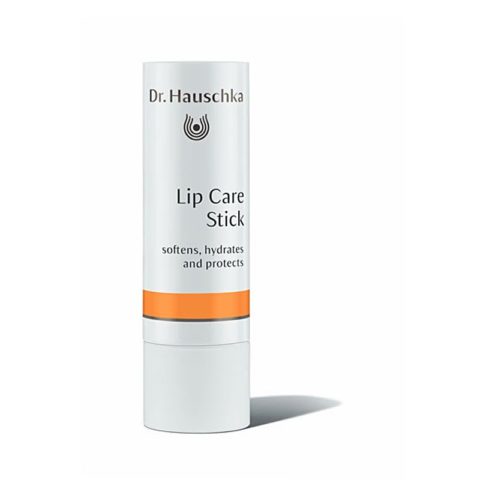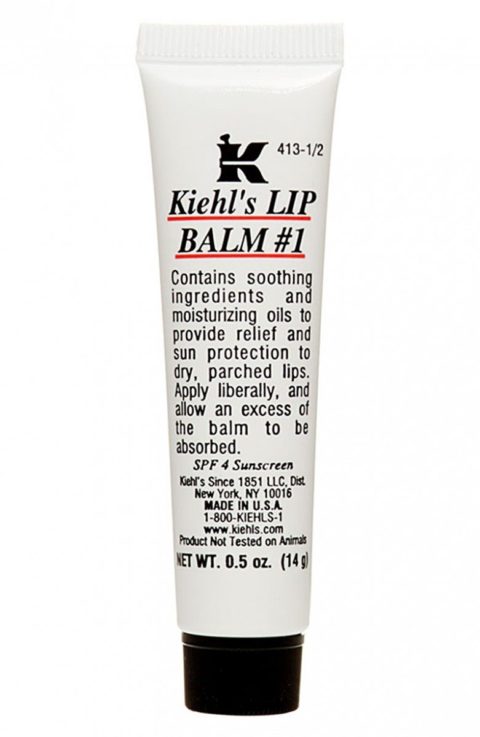We may be in the depths of winter, but that doesn’t mean we’ve come to embrace (or adapt to) the frigid temperatures and never-ending snow, not to mention the havoc the weather has wreaked on our lips. For many of us, lip balm has quickly joined the ranks of keys, wallet and phone as something we double-check our purse for before leaving the house.
We spoke to Dr. Julia Carroll, a dermatologist at Compass Dermatology, who explained that a swipe of lip balm throughout the day quickly soothes cracked and dry lips because “hydrating ingredients moisturize the lips and decreases transepidermal water loss.” It’s easy to blame winter for the painful state of your lips, but it can be a combination of the environment as well as saliva causing dryness from licking your lips by habit or a lip balm’s flavoured ingredients.
Like many things in life, moderation is key. “Some lip balms contain irritating or too-tasty ingredients so they inherently start you on a cycle of lip licking and lip balm addiction,” suggests Dr. Carroll. Licking your lips can cause further irritation, making it seem like your lip balm has stopped working. In actuality, if you find yourself applying a balm more than a few times a day, it may be a result of a deeper problem like a type of eczema called Irritant Contact Dermatisis, or aggravation from over-applying lip balm.
Every balm boasts key ingredients that work to improve the condition of your lips and like shampoo or mascara, everyone has their preferred brand. If you’ve been in a monogamous relationship with a particular balm and have tried other products based on recommendation or different ingredients with no results, it could be because the balm you are switching to isn’t not the right product for your particular lip condition. Click through to find out why the following popular lip balms are on so many people’s lips.
Lip balm addiction
Beeswax
This natural wax is a thickening agent with emollient properties that acts similar to a seal to protect and soothe lips.
Burt’s Bees Beeswax Lip Balm ($5, burtsbees.ca)
Lip balm addiction
Beeswax
While this ingredient is for the most part safe, people can develop allergies to it, so Dr. Carroll suggests using it while being cautious of any potential reactions.
Dr. Hauschka Lip Care Stick ($16, murale.ca)
Lip balm addiction
Shea butter
Shea butter is rich in antioxidants and mimics the natural moisturizing factor (NMF) found in our skin, which is what makes it such an effective and favourable ingredient in lip care products as well as other cosmetics.
Nivea Essential Lip Care ($3, well.ca)
Lip balm addiction
Shea butter
Since Shea butter is extracted from a plant (the vitellaria tree), this method can alter its structure and function. Dr. Carrroll recommends “looking for a product that is mechanically extracted versus chemically extracted.”
L’Occitane Shea Butter Moisturizing Lip Balm ($16, nordstrom.com)
Lip balm addiction
Cocoa butter
Cocoa butter is a source of an antioxidant rich fat with emollient properties that help retain moisture in the lips.
The Body Shop Cocoa Butter Lip Care Stick ($8, bodyshop.ca)
Lip balm addiction
Cocoa butter
In addition to treating dryness, test tube research shows that it also it aids in improving the skin’s elasticity and promotes healthy collagen production, which is why lip balms containing cocoa butter are so sought-after.
Badger Cocoa Butter Lip Balm Stick ($7, well.ca)
Lip balm addiction
Petroleum jelly
Not only is petroleum jelly an economical skincare ingredient, it’s also one of the safest and most helpful options which is why so many brands utilize it in their lip balms.
Vaseline Lip Therap ($3, at drugstores)
Lip balm addiction
Petroleum jelly
“Topical application of petroleum jelly can help the outer layer of the skin (the stratum corneum), repair from damage and decrease inflammation,” explains Dr. Carroll. “It is the remedy to many irritating lip balms!”
Kiehl’s Lip Balm #1 ($9, kiehls.ca)
Lip balm addiction
Vitamin E
Vitamin E is a powerful antioxidant that has been proven to protect the skin from environmental damage, specifically ultraviolet damage from the sun. It also reduces
transepidermal water loss from the skin and strengthens the skin’s barrier.
The Body Shop Vitamin E Lip Care Stick ($9, thebodyshop.ca)
Lip balm addiction
Vitamin E
Although vitamin E can help with treating lips, Dr. Carroll recommends being cautious when using these products since some studies have found that up to 33% of people can be allergic to it.
Sephora Collection Super Nourishing Lip Balm ($6, sephora.com)
Lip balm addiction
Menthol
Once menthol hits the lips, it creates a tingling sensation that can be addicting in itself. Menthol is derived from peppermint and penetrates the skin to stimulate cold-sensing nerves that relieve any burning from irritation but can also potentially cause further dehydration or sensitivity.
Blistex Regular Lip Balm ($2, walmart.ca)
Lip balm addiction
Menthol
A number of balms contain menthol in combination with other soothing ingredients that results a gentler product. When using a balm with menthol, it’s best to apply it according to its directions and be aware of any further irritation that may occur.
Maybelline New York Baby Lips Dr. Rescue Medicated Lip Balm in Coral Crave ($5, at drugstores)
Lip balm addiction
Jojoba oil
Similar to shea butter, jojoba oil is a soothing oil that mimes the body’s natural moisturizing factor which makes it an efficient ingredient in helping lips retain their moisture.
Fresh Sugar Advanced Lip Therapy ($29, sephora.com)
Lip balm addiction
Jojoba oil
Jojoba oil is similar to your skin’s natural sebum (oil), so it’s a great way to moisturize dry areas.
eos Pomegranate Raspberry Lip Sphere ($4, at Shoppers Drug Mart)
The post Is lip balm addiction real? We spoke to a dermatologist and found out appeared first on FASHION Magazine.
Use left/right arrows to navigate the slideshow or swipe left/right if using a mobile device













